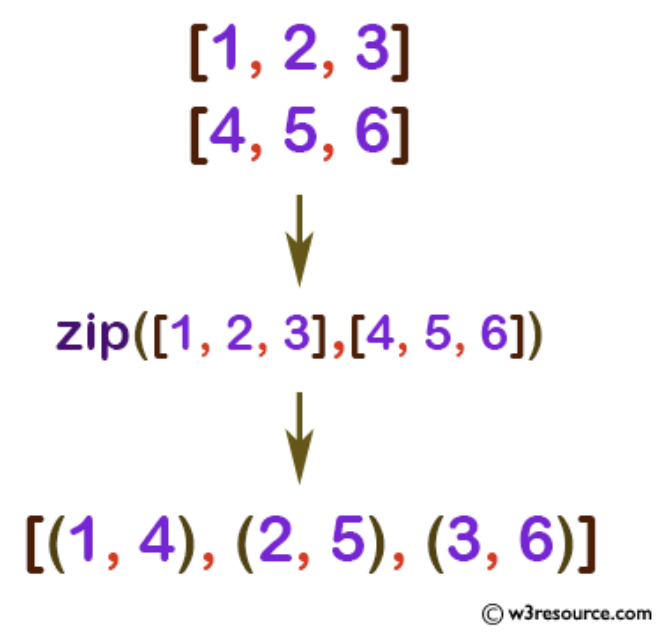Zip
Contents
Zip#
In our next example, we will need to use a very useful function in Python called zip . It takes two lists and “zips” them up so you can iterate over pairs of elements from both lists. This is much clearer with an example.
x = [1,2,3]
y = [4,5,6]
z = zip(x, y)
for p in z:
print(p)
The result of a zip is pairs of values from each list! The first values from both lists, then the second values, then the third, and so on. This can be clearer by looking at this picture showing the result of zip

Warning#
It turns out the return type of zip is not actually a list of these pairs! Try printing out the result of zip .
x = [1, 2, 3]
y = [4, 5, 6]
z = zip(x, y)
print(z)
It returns a special zip object (also called zip ) instead of a list ! The zip object is what we call a generator. It’s like a list in the sense that it is a sequence of values you can iterate over in a loop, but it’s different because you can’t actually index into it! Try editing the last block to print(z[1]) to see that this fails.
The reason zip does not return a list is that the operation is lazy. It doesn’t want to compute the entire sequence of values right away and, instead, waits to compute the pairs as needed. This is exactly like the range function! It does not produce a list of numbers, but instead is a generator of them.
A common trick if you want to get all the pairs into a list would be to just convert it to a list manually like in the block below.
x = [1, 2, 3]
y = [4, 5, 6]
z = list(zip(x, y))
print(z)
